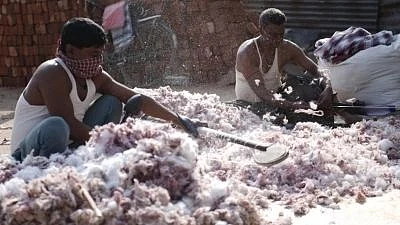The world's cotton supply has had a massive drop in production as extreme weather events wreak havoc on the countries with the largest cotton produce.
As the world's top cotton producer, India is responsible for over 40% percent of the world's total production of cotton, according to USDA. However, now India is dealing with flash floods around the country as well as a pest infestation that has caused severe damage to crops. The situation has become so dire, the country has had to resort to importing supplies.
China, the world's second largest cotton producer, has seen a collection of drought, flash floods and heatwave that has caused concern over the upcoming harvest.
The United States and Brazil are two of the largest exporters of cotton in the world. However, currently the US is battling against drought that is causing devastation to the crop yield and has been predicted to drop production levels to the lowest in nearly a decade.
Meanwhile, Brazil is also facing similar situation with drought and heatwaves ravaging crops. The cotton production in the country has already been cut by nearly 30% as reported by the USDA.
This collection of extreme weather events caused by climate change has sent cotton prices soaring by approximately 30 percent.
Only earlier this year, the prices had increased to levels not seen since 2011, compressing the margins of clothing suppliers around the world and threatening to raise the costs of products ranging from clothing to paper.
In Brazil, things are looking especially grim. The drought has already affected almost 2,00,000 metric tons of produce, according to Abrapa, a group representing growers. Cotton production is now seen at 2.6 million tons – or less, with the nation’s 2021-2022 harvest drawing to a close.
The US is warring with a similar fate, with produce dropping nearly 28 percent in the season at the beginning of August. This is the lowest production has been since the 2009-2010 season, according to Business Standard. The effects of the drought have been so severe, the country is rationing water from the Colorado river.
Between the US and Brazil, this would account for half of the world’s cotton produce.
The US government and analysts have been predicting a drop in demand due to a decline in clothing purchases and economic slowdown, especially in Europe and Asia. And yet all indications point to soaring prices for cotton in the coming months with, especially with crops shrinking, as stated by USDA's
Farmers in Brazil have now buckled down with the intention of expanding cotton production so as to not be blindsided for the 2022-2023 season. The have expanded cotton farming areas by approximately 1,00,000 hectares to 1.7 million hectares and intend to begin planting in January as reposted by Business Standard.
(At The Quint, we question everything. Play an active role in shaping our journalism by becoming a member today.)
